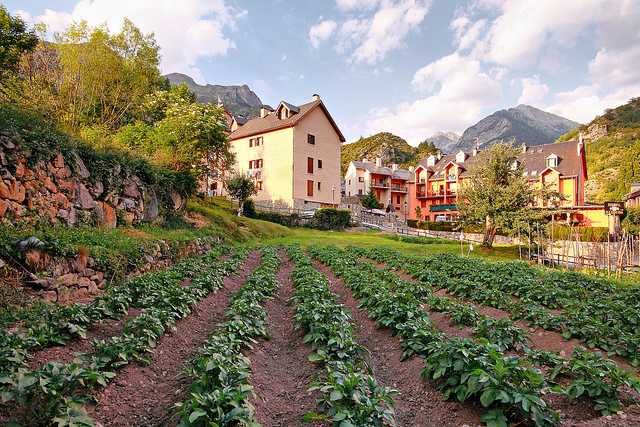
Growing potatoes can be lots of fun. With so many colors and types available, planting this vegetable can add interest to your garden. The texture and taste of home-grown potatoes are much better compared to those bought in store. Potatoes need to be watched to prevent sunburn and also need a cool climate. In warmer climate zones, potatoes can be grown as a winter crop. Learn how to grow potatoes and when to plant them in your garden with these simple and easy steps.
When to plant
In climates with hot summers and short springs, plant the midseason and early varieties 3 to 4 weeks before your last spring frost date. In climates with hot summers and long springs, plant midseason and early varieties 3 to 4 weeks before your last spring frost date. Make sure to plant late-maturing varieties in early summer, so they can mature in the fall. In climates with cool summers, plant late, midseason and early varieties 2 to 3 weeks before your last spring frost date.
How to plant
Loosen the soil to at least ten inches deep in order to prepare the planting bed. This vegetable adapts well to acidic soils with a pH below 6. Keep in mind that this is lower than what is preferred by many other vegetable crops. Mix in a layer of rotted leaves or compost, along with a soybean meal, a half-ration of alfalfa meal or another high-nitrogen organic fertilizer. It is highly recommended that you don’t use manure, since it’s correlated with an increase in rough patches on spud skins.
Cut the seed potatoes into pieces two days before planting, so that each piece has 2 to 3 buds. By doing so, you’ll reduce the risk of rotting. Work slowly and carefully if the buds have already grown into sprouts. Leave the cut pieces to dry in a room which is well-ventilated. Plant the pieces in four-inch deep furrows and twelve inches apart. Cover the seed pieces with two inches of soil. After the first sprouts emerge, fill in the furrows.
Harvest and store
Once they finish making their crop, potato plants die. Start digging when the foliage begins to wither and yellow. Slowly clean off dirt and allow the tubers to dry indoors, covered with dry blanket, for a few days. Make sure to protect the tubers from sunlight at all times to prevent greening which can result in bitterness. Place the best tubers in a cool place with temperature between 50 to 60 degrees F. to be used as seed potatoes. First eat the potatoes which are “less than perfect,” but don’t forget that they won’t store forever. However, potato slices can be blanched and dried for longer storage. In order to can potatoes, you’ll have to use a pressure canner.
Save seeds
Sometimes potatoes produce true seeds. However, they’re easiest to propagate by replanting the actual potatoes. We recommend that you start with certified disease-free seed potatoes, if you’re a new gardener. Try not to eat all the perfect, medium-sized potatoes, because they’ll be great for planting the next year. You will need about six pounds of seed potatoes to plant 50 feet of row, while yield will vary from 75 to 125 pounds.